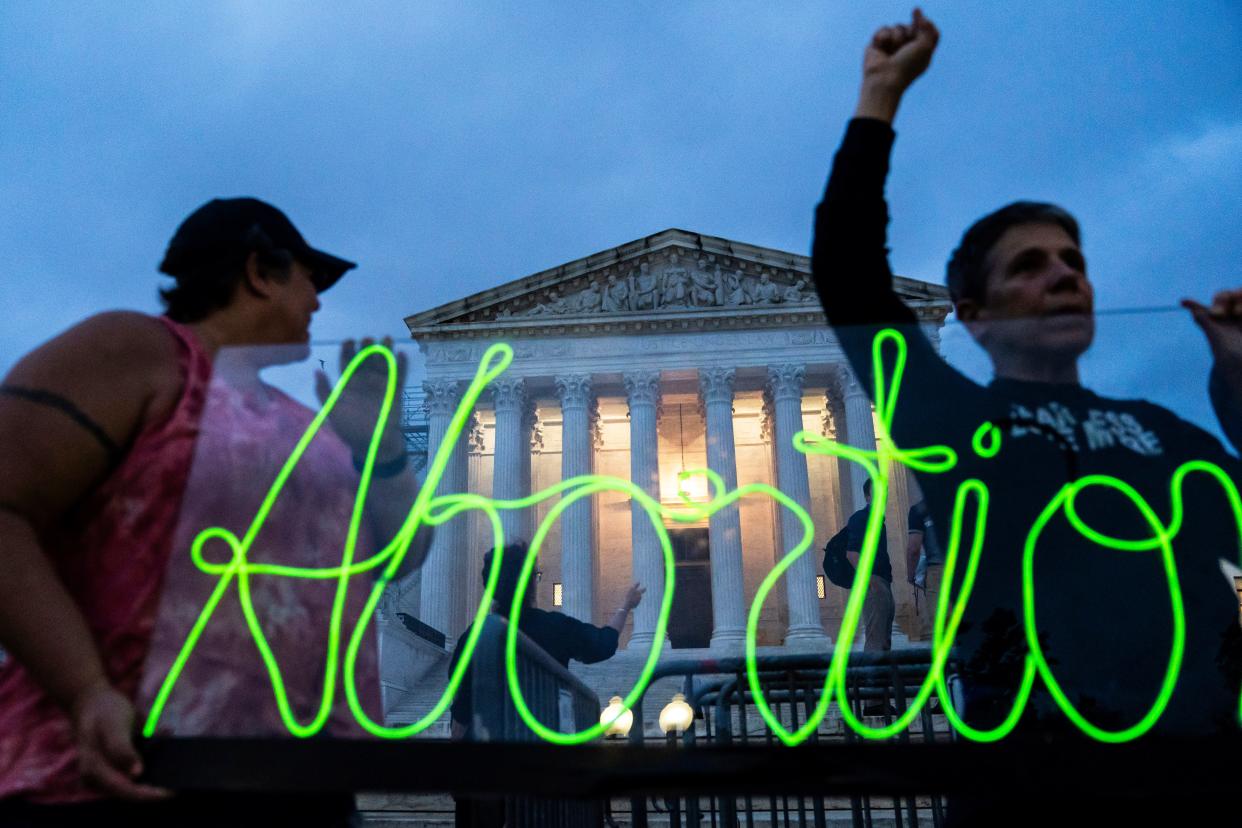Abortions in US rose slightly after post-Roe restrictions were put in place, new study finds

The total number of abortions performed across the country slightly increased in the 12 months following the decision by the Supreme Court to overturn Roe v. Wade, according to a new study.
The report, authored by the Society of Family Planning, a group that advocates for abortion access, found that the number of procedures fell to nearly zero in states with the strictest bans, and rose in areas with more lenient laws, especially if they were close to places that enacted full bans. Since last year, most Republican-controlled states have enacted restrictions, while most Democrat-controlled states have extended protections for those from out of state seeking abortion.
“The Dobbs decision turned abortion access in this country upside down,” Alison Norris, a co-chair for the study and a professor at The Ohio State University’s College of Public Health, told the Associated Press in a statement. “The fact that abortions increased overall in the past year shows what happens when abortion access is improved, and some previously unmet need for abortion is met.”
Researchers said there are many reasons for this uptick. Medical facilities have increased efforts to see patients quickly and clinics in states where the procedure is legal – such as Illinois, Kansas, and New Mexico – have expanded to accommodate a surge of patients from neighboring states.
Abortions declined in states with restrictions
The data, collected from April 2022 to June 2023, represents a full year after the Supreme Court in June 2022 ruled on the Dobbs v. Jackson Women’s Health Organization ruling, overturning Roe v. Wade and erasing a reproductive right the high court established nearly five decades ago.
In all, abortions provided by clinics, hospitals, medical offices, and virtual-only clinics rose by nearly 200 a month nationally from July 2022 through June 2023 compared with May and June 2022. Since 2017, abortion rates have increased in the country, making decreasing rates in strict states more striking as need increases, researchers said.
According to the study, states that experienced the most declines in abortions, such as Texas, Wisconsin, and Tennessee, were among the strictest before the Dobbs decision. As of June 2023, 14 states in the U.S. have completely banned abortion, including Alabama, Mississippi, and South Dakota.
An anti-abortion group celebrated the number of abortions decreasing in states with the strictest bans. “WeCount’s report confirms pro-life protections in states are having a positive impact,” Tessa Longbons, a senior researcher for the Charlotte Lozier Institute, told AP in a statement.
According to the study, the states with the largest declines in abortions also tended to have the most disparities in maternal healthcare and poverty levels. Researchers said working-class people and those of color were most impacted by the federal ban, with about 75% of abortion patients living on low incomes.
Researchers said the numbers do not reflect abortion obtained outside the medical system, such as by getting pills from a friend.
After Roe v. Wade: This is what state abortion laws look like in US
Increased abortion tourism in the U.S.
Since the ban, states have passed laws to expand abortion access, with some even covering care for out-of-state residents. Researchers said these new policies have likely increased travel between states for these procedures.
The report referred to states with the largest increase of abortions provided in the 12-month period as “surge states.” These states included: Illinois, Florida, North Carolina, California, and New Mexico. States with big increases were likely governed by Democrats, but also some states with conservative leaders where abortion rights have been limited since the Dobbs ruling.
In Florida, attorneys for the government led by Florida Gov. Ron DeSantis contend the state's highest court got it wrong 34 years ago when it ruled that women had a right to seek abortions without government interference under the state’s constitutional privacy right. And in North Carolina, a ban on abortion after 12 weeks was enacted in July.
According to the study, states near regions with abortion bans in place saw drastically higher numbers.
In the years since Roe was overturned, small, blue-state towns near red-state borders like Carbondale, Illinois, have experienced the court’s radical redrawing of abortion access. States moved to restrict or ban abortions, and some clinics moved or opened anew in these border towns.
In the southeast, Florida, North Carolina, and Virginia have seen increases in abortion patients, according to researchers.
'Never imagined:' How one quiet Illinois college town became the symbol of abortion rights in America
Contributing: The Associated Press
This article originally appeared on USA TODAY: Abortions rose slightly in the United States post-Roe restrictions

